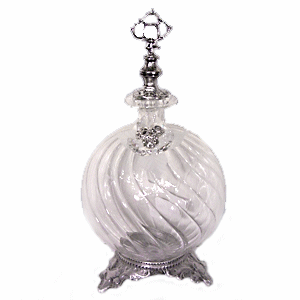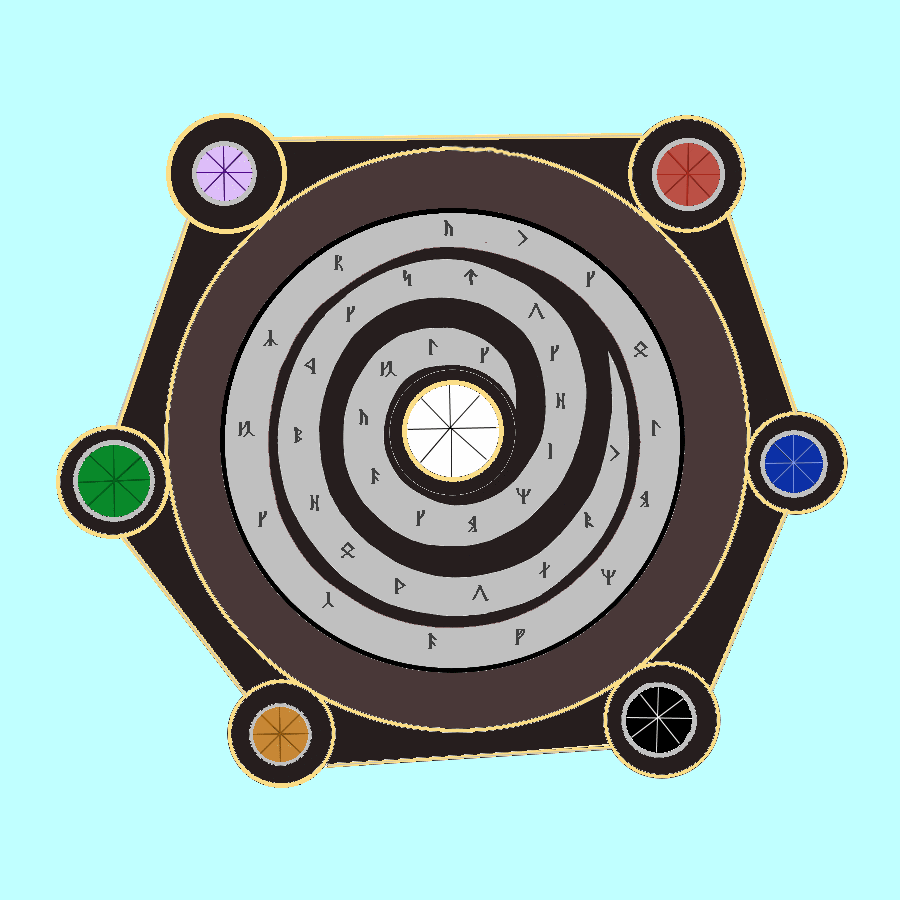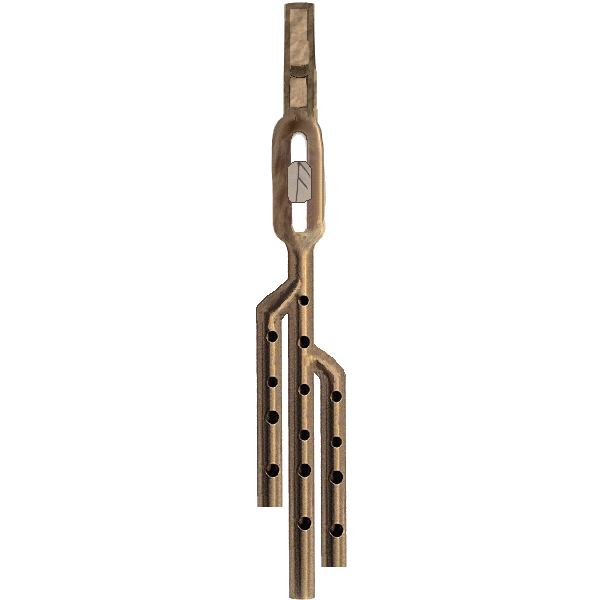Magical Expeditions
The following entry was the first place for the "Luna Lovegood Archeology Today Expedition Contest."
Luna Lovegood's Expedition to Berwyn Mountains, Wales
Adele James (Gryffindor)
Day One:
Got REALLY grubby. I mean UNBELIEVABLY grubby. I am never going to be clean again, the mud has seeped into my skin. It DID have to rain, didn't it?
Day Two:
Found some pebbles. They are very nice pebbles. Luna thought they might have been from some ancient form of communication, or maybe a childrens game, or maybe even the eggs of a Dimpled Schnozzler in disguise, but they weren't. They were just pebbles.
Am still grubby.
Day Three:
Was complaining about still being grubby when we unearthed a highly unusual stone (dark granite) chest, suprisingly light, and obviously very, very old. The chest was decorated with Ogham script, and carvings of trees, animals, and magical symbols, and was obviously crafted magically, most likely by Druids as the Ogham inscriptions suggest. The chest was locked with a charm we could not identify or counter, so we set about cleaning all of the dirt and grime off of it. In the process of doing this, down in the right hand bottom corner a piece broke off. At first we believed we had simply been careless, but upon closer inspection of the 'damage', we discovered that what was broken off was actually a key, and was meant to be removed and replaced as required. When clicked back into place, the key resembles a crawling vine, identical to the decoration around it, rendering it perfectly camouflaged. If you didn't know what you were looking for, you would not find this key, and would not be able to open the chest.
After cleaning everything thoroughly (for the key and keyhole were clogged with mud, and unusable), we managed to open the chest with very little effort. Inside was a vial of water, a vial of oil, and three ornate boxes, cleaved from the same stone as the chest, but each box was inlaid somehow with silver and gems for ornamentation. All were sitting atop a neatly folded length of velvet, which we believe was used as padding for protection purposes, which in turn was sitting in a large tray.

Each box was a different size. The largest box was square in shape, 12inches long and 8inches high. The gems used on this box appear to be diamonds, as they are perfectly clear and very very hard. Laid into the silver decorations, still bright, the box resembles the night sky, as the stone is quite dark. The next box down in size was a miniature chest, rounded lid and all. It was decorated with silver, and the gems appear to be sapphires. This mini-chest is only eight inches long, 4 inches deep and 5 inches tall at its highest point. The final box was rectangluar in shape, and quite similar to the boxes in which Mr. Ollivander stores his wands. 7 1/2 inches long, 2 inches wide and 1 inch deep, the decorations again made of silver set with Rubies. None of these boxes were locked or charmed in any way.
Inside the first and largest box we found a very interesting hexagonal stone disk. 8 inches in diameter, it consists of a perfect circle, raised slightly higher than six smaller circles or disks, all of which are sitting upon a platform made of stone, carved from the same piece. These smaller disks, each bare a small directly in the center, surrounded by what appear to be hand-etched runes. Each hollow has a very tiny gemstone directly in the center. The larger disk is decorated all around with runes, and in a swirl of runic script which winds iteslf around until it reaches the center, where another hollow sits. This disk is not of the same stone as the Chest or Boxes, but is also dark in colour and quite heavy.

In the second box, the mini chest, lay seven small bags, each holding one precious stone. These were Ruby, Sapphire, Emerald, Diamond, Onyx, Amethyst, and Amber. The colours of the stones correspond to the colours of the tiny gemstones already inlaid into the disk.
In the third box lay a flute, unlike any Luna and I had ever seen. It's mouthpiece broke off into two tubes, which then came back together again only the split into three seperate pipes, all with holes. In the middle of the opening created below the mouthpiece is strung a rune, Ansuz, the rune of communication.

The large stone tray at the bottom of the original chest has a small channel around the rim, which has traces of oil inside. The bottom of the tray has traces of dirt, indicating that its purpose is not to 'carry' anything as such, but to hold something upon the ground.
Something to note: The tray appears to be adjustable in size.
At the very bottom of the chest, there lay a single piece of old, decaying parchment. Written on the parchment was an advertisment for a 'Wizarding Faire' featuring duelling tournaments. Down the bottom, it's location was given and an assurance of 'Remaining wholly undiscovered by the muggle wretches' was promised, due to the hiring and use of an object referred to only as 'The Shield'. It is our belief that the object contained within the chest IS the shield, due to the use of 'Protection' Runes in the decorations, and also the incorporation of what we believe is elemental magic.
HYPOTHESIS OF HOW THE SHIELD WORKS
We believe that the Shield uses many different forms of magic fused together to operate.
The Tray would be placed upon the earth, then filled with water from the vial, the channel along the rim filled with the oil, and then the oil set alight. Since fire feeds from air, this encompasses all the major elements - Earth, Fire, Water, and Air. The gemstones would be placed in the small hollows in the disk, and activated by magic - probably from the wand of the witch or wizard performing these actions. Then the disk would be placed into the water, where it floats. This has been tested, and the disk - despite its weight - floats perfectly.
Thus far the magic we use - wand/inborn magic - and the older, elemental magic are combined. The last object to be included is the special flute.
Music as a magic is far older than any we now study, but just as powerful if not more so. Albus Dumbledore is quoted as saying "...Music - a magic far beyond what we teach here [Hogwarts]..." We believe that the flute is used to play the Pan Call, a series of particular notes played in such a way as to envoke some of the deepest and most powerful of magics to assist with the given task. There are 7 stones to 'activate'. It is reasonable to assume that the Pan Call must be played seven times before The Shield becomes effective.
Since the tray appears to be adjustable, it is likely that the actual size of the area protected by The Shield is relative to the size of the tray it sits in.
We estimate the age of the chest and it's contents to be pre-1300's. It will be difficult to determine it's exact age, as it is cleaved from stone. It is highly likely that Queen Maeve, who taught magic before hogwarts was opened, would have used something like The Shield to keep her and her students safe.
Prior research suggested that the enchantments used today to protect gatherings of magical folk from the eyes of muggles were not as developed, nor as powerful or effective in the time when The Shield would have been in use. Evidence indicates that a 'weak' enchantment is further weakened and eventually eroded entirely when cast and held in the presence of a large amount of Magical Energy, such as is found in gatherings of Wizard Kind. It is highly likely that The Shield was invented as a result of the necessity to protect Wizards and Witches from Muggles and Vice-Versa, and was used, and improved upon, until the invention and perfection of the enchantments used today.
In other news, I am no longer bothered about being grubby.
[ Return to Top ]